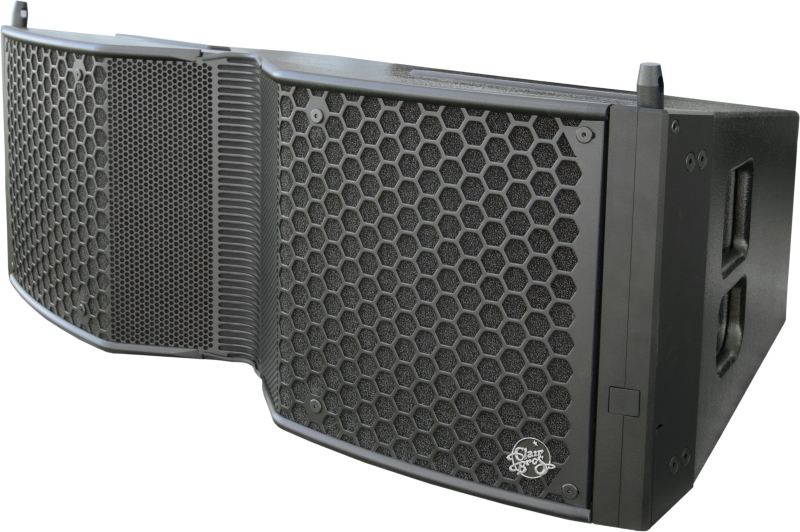
Meanwhile, Adamson utilizes specialized Kevlar cones for its woofers, and the company also coaxially mounts a HF compression driver to the backplate of a MF compression driver to create a proprietary Co-Entrant Mid/High device covering the upper frequency ranges.
In addition, the company has formulated Controlled Summation Technology, where outwardly splayed low-midrange transducers place their acoustic centers in closer proximity – further refined with a DSP-controlled overlap to eliminate mid-lobing.
JBL Professional VTX line arrays incorporate proprietary D2 dual diaphragm, dual voice coil compression drivers, designed to give better control of distortion and dome breakup modes.

Compared with a single diaphragm driver, the D2 has lower moving mass, less overall weight, and is also stated to provide better heat transfer as well as greater power handling and higher SPL levels.
The Clair Brothers C15 approach to midrange and high-frequency technology is centrally located mid/high sections that provide 90-degree horizontal by 10-degree vertical coverage, symmetrically flanked by low-frequency sections.
A waveguide adds higher directivity to the midrange in the vertical and horizontal planes, resulting in a very coherent midrange wavefront that the company states is without coloration or throat distortion.
Further, each C15 low-frequency driver (15-inch with 4-inch voice coil) is front-loaded in its own tuned reflex chamber with venturi reflex porting. The woofers are angled in a quasi-dipole arrangement that aligns the polar pattern of their midrange with the polar pattern of the midrange waveguides to provide a seamless transition as well as extended low/midrange directivity pattern control.
The Electro-Voice X1 couples the output of a pair of 2-inch compression drivers using their Wavefront-Shaping Circular Hydra (WCH) device before the combined output enters the 90- by 10-degree horn.
Bose Professional ShowMatch DeltaQ enclosures use replaceable waveguides to match audience coverage requirements, offering 5-, 10-, or 20-degree vertical coverage.

d&b audiotechnik takes a “holistic” approach to system design, with head of marketing communications Sarah Sowah stating that “control of directivity is a fixation” for the company, citing the proprietary wave-shaping device used to guide the output of two coaxially mounted compression drivers in J-Series arrays.
In the newly released NEXO GEO M10, a proprietary Directivity/Phase Device is used to extend the upper line source coupling frequency limits between the adjacent 10-inch drivers.
According to the company, with this technology “adjacent loudspeakers couple as coherently as if there were twice as many 6-inch drivers, mounted at half the physical distance.”
Renkus-Heinz VARIAi presents a fully modular approach where cabinets can be configured as flown vertical arrays, horizontal arrays, or ground stacked systems. With a range of vertical and horizontal dispersion angles and the company’s Transitional WaveGuides, the result is a way to produce a “custom” design for a very wide range of applications.
VARIAi 101 full-range models are available in three vertical cabinet angles (7.5, 15 and 22.5 degrees), allowing vertical coverage to be tailored to meet shape and SPL requirements — 15- and 22.5-degree cabinets can be used to cover greater vertical angles while 7.5-degree cabinets provide tighter control. Further, each cabinet can be ordered with one of five WaveGuides, with a choice of 60-, 90- or 120-degree standard or 60- to 90-degree, or 90- to 120-degree, Transitional WaveGuides.
Component Layout
As the specialized components are designed, other decisions must be made. These include the quantity and size of the transducers, whether the enclosure will divide its frequency coverage into two or three bands, how large the enclosure will be, and whether there will be a series of larger and/or smaller models for differing applications.
Also, will multiple components cover the same frequency band and how will they be coupled, will the components be direct radiating, horn-loaded, or in some other hybrid arrangement, and will the system be amplified and otherwise controlled internally or externally.
